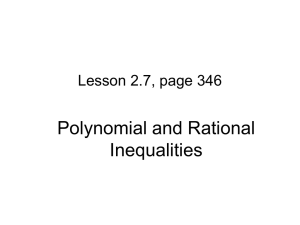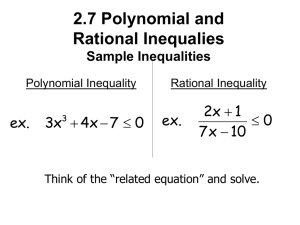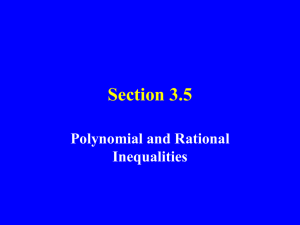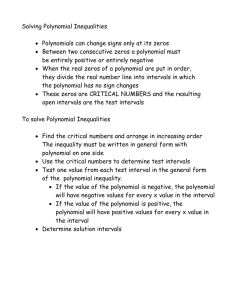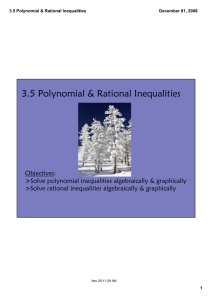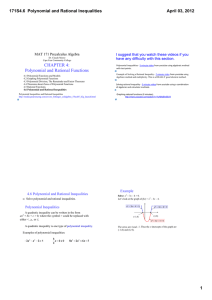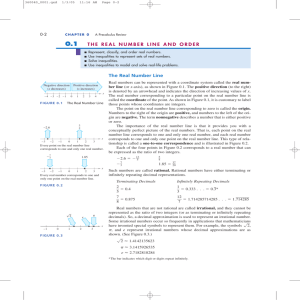3.6 - Polynomial and Rational Inequalities
advertisement
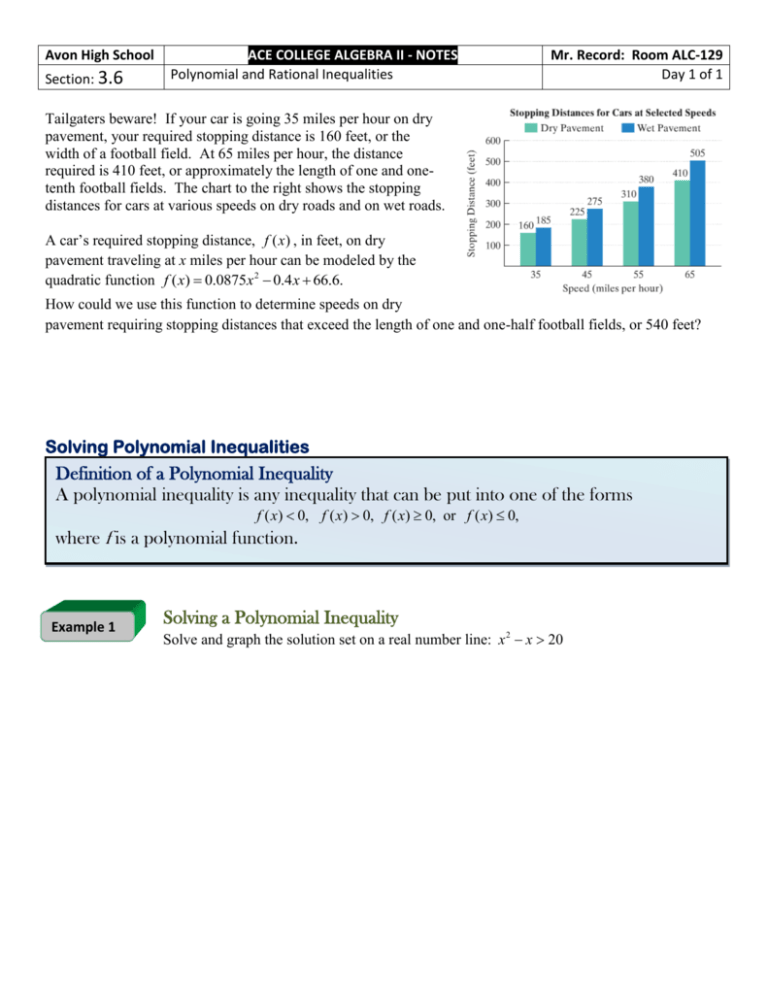
Avon High School Section: 3.6 ACE COLLEGE ALGEBRA II - NOTES Polynomial and Rational Inequalities Mr. Record: Room ALC-129 Day 1 of 1 Tailgaters beware! If your car is going 35 miles per hour on dry pavement, your required stopping distance is 160 feet, or the width of a football field. At 65 miles per hour, the distance required is 410 feet, or approximately the length of one and onetenth football fields. The chart to the right shows the stopping distances for cars at various speeds on dry roads and on wet roads. A car’s required stopping distance, f ( x) , in feet, on dry pavement traveling at x miles per hour can be modeled by the quadratic function f ( x) 0.0875 x 2 0.4 x 66.6. How could we use this function to determine speeds on dry pavement requiring stopping distances that exceed the length of one and one-half football fields, or 540 feet? Solving Polynomial Inequalities Definition of a Polynomial Inequality A polynomial inequality is any inequality that can be put into one of the forms f ( x) 0, f ( x) 0, f ( x) 0, or f ( x) 0, where f is a polynomial function. Example 1 Solving a Polynomial Inequality Solve and graph the solution set on a real number line: x 2 x 20 Procedure for Solving Polynomial Inequalities Express the inequality in the form f ( x) 0 or f ( x) 0 where f is a polynomial function. Solve the equation f ( x) 0 . The real solutions are the boundary points. Locate these boundary points on a number line, thereby dividing the number line into intervals. Choose one representative number, called a test value, within each interval and evaluate f at that number. a. If the value of f is positive, then f ( x) 0 for all numbers in the interval, x, in the interval. b. If the value of f is negative, then f ( x) 0 for all numbers in the interval, x, in the interval. 5. Write the solution set, selecting the interval or intervals that satisfy the given inequality. 1. 2. 3. 4. This procedure is valid if < is replaced by ≤ or > is replaced by ≥. However, if the inequality involves ≤ or ≥, include the boundary points [the solutions of f ( x) 0 ] in the solution set. If is a rational function in which and Solving a Polynomial Inequality have no common factors and a is a zero of Examplethe 2 denominator, then a verticalsetasymptote of the graph x3 3. x 2 x 3 Solve and graph theissolution on a real number line: of Solving Rational Inequalities Example 3 Solving a Rational Inequality Solve and graph the solution set on a real number line: 2x 1 x 1 Applications The Position Function for a Free-Falling Object Near Earth’s Surface An object that is falling or vertically projected into the air has its height above the ground, s (t ) , in feet given by where v0 is the original velocity (initial velocity) of the object, in feet per second, t is the time that the object is in motion, in seconds, and s0 is the original height (initial height) of the object, in feet. Example 4 Using the Position Function A ball is thrown vertically upward from the top of the Leaning Tower of Pisa (190 feet high) with an initial velocity of 96 feet per second. During which time period will the ball’s height exceed that of the tower?

